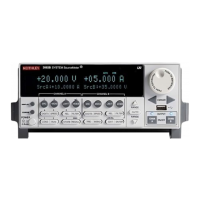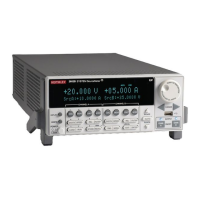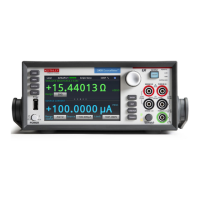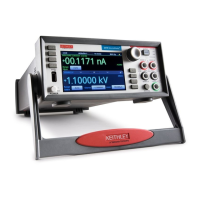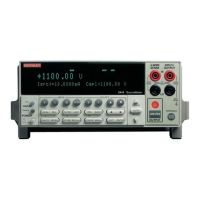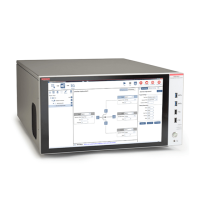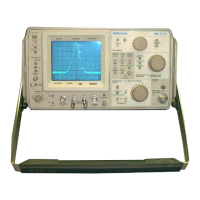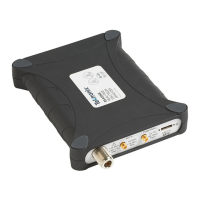When an interlock is required for safety, a separate circuit should be provided that meets the
requirements of the application to reliably protect the operator from hazardous conditions.
The digital I/O port is a suitable source for the 5 V required to power the physical interlock
provided by the 2601B-P-INT. Failure to adhere to these guidelines could result in personal
injury or death.
The 2601B-PULSE with the 2601B-P-INT installed provides an optional interlock circuit.
Once engaged, the interlock helps facilitate the safe operation of the instrument in a test
system by prohibiting the output voltage and current when the interlock circuit is opened. Not
using the interlock could expose the operator to hazardous conditions within the test circuit
that could result in personal injury or death.
Interlock operation
You can set up the interlock using the +5 V supply pins on the digital I/O port on the rear panel of the
instrument or by using an external 5 V source. Both methods use the Model 2601B-P-INT Interlock
and Cable Connector Box to make connections.
With either method, relays in the 2601B-P-INT are in a de-energized state until a remote switch is
closed. The de-energized state prevents current from passing to the device under test (DUT) by
keeping the FORCE HI terminal shorted to the FORCE LO terminal. When the external safety switch
closes, current is sourced from a +5 V pin on the digital I/O port or the external power supply, which
energizes the relay and opens the shorting contacts. When the contacts are open, the 2601B-PULSE
can source power to the DUT.
If the remote switch is part of a test fixture, if the lid of the test fixture opens, the relay is closed and
the output of the 2601B-PULSE instrument turns off. When the lid is closed, the relay contacts open
and the output can be turned on.
To use the interlock, you must set the jumper on the rear panel of the 2601B-P-INT to ENABLE. Refer
to Installing the 2601B-P-INT (on page 2-6) for information on setting the jumper.
When the jumper is set to ENABLE, the safety interlock relay immediately requires 5 V to open.
Depending on the availability of the 5 V signal, the short is applied to or removed from the Force HI
and LO terminals on the 2601B-P-INT, regardless of the interlock setting made through the front
panel or by using the remote commands.
To synchronize the operation of the 2601B-PULSE output with the jumper setting of the 2601B-P-INT,
you must also enable the interlock through the front panel or by using the remote commands.
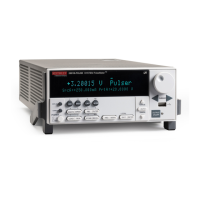
